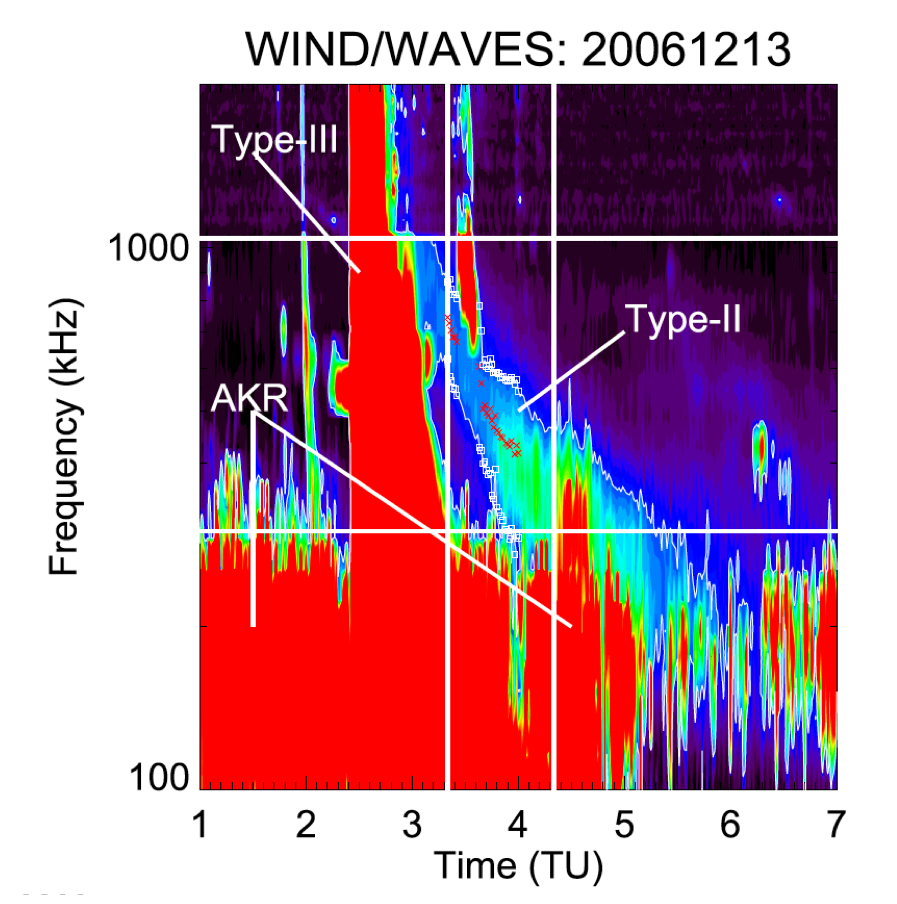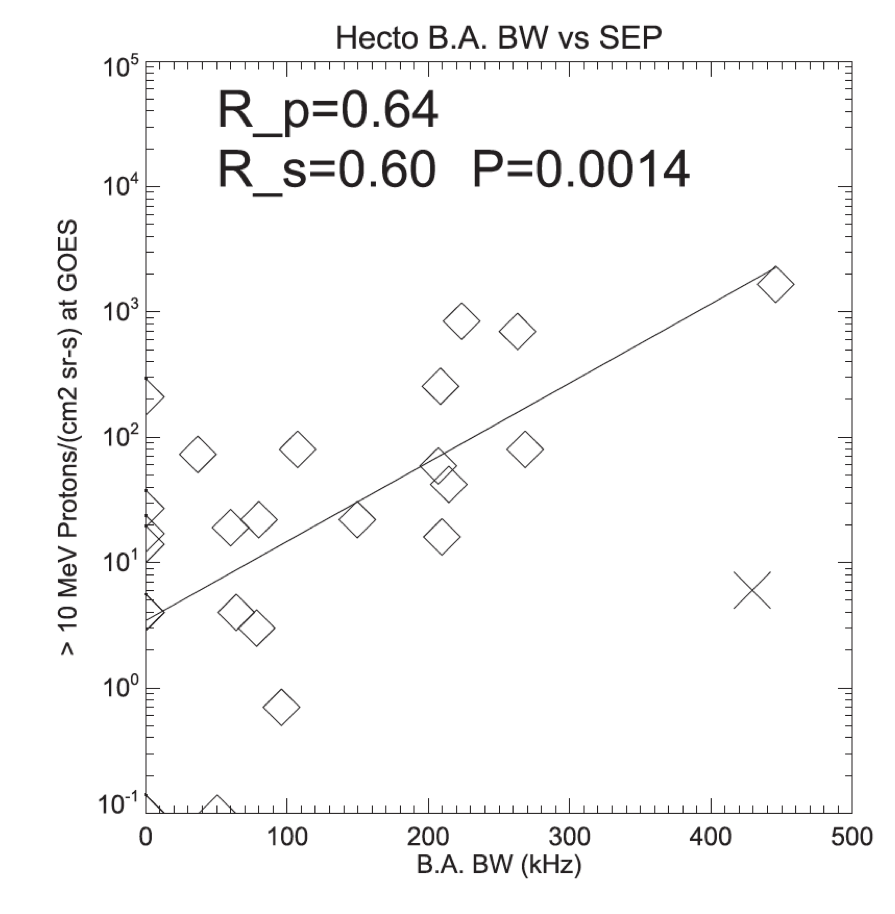Kazumasa IWAI (ISEE, Nagoya University)
Solar eruptive phenomena, such as flares and coronal mass ejections (CMEs), generate high-energy particles called solar energetic particles. Severe SEP events sometimes cause satellite anomalies and radiation exposure to humans in space. Understanding and forecasting SEPs is an important issue in space weather. We investigated SEPs in the Coordinated Data Analysis Workshop for SEPs organized by PSTEP on 2017 (PSTEP-SEP-CDAW https://sites.google.com/view/pstep-cdaw/home?authuser=0″ ).
We investigated the relationship between the spectral structures of type II solar radio bursts in the hectometric and kilometric wavelength ranges and the peak flux of SEPs. To examine the statistical relationship between type II bursts and SEPs, we selected 26 CME events with similar characteristics (e.g., initial speed, angular width, and location) observed by the Large Angle and Spectrometric Coronagraph (LASCO), regardless of the characteristics of the corresponding type II bursts and the SEP flux. Then, we compared associated type II bursts observed by the Radio and Plasma Wave Experiment (WAVES) onboard the Wind spacecraft and the SEP flux observed by the Geostationary Operational Environmental Satellite (GOES) orbiting around the Earth. We found that the bandwidth of the hectometric type II bursts and the peak flux of the SEPs has a positive correlation (with a correlation coefficient of 0.64). This result supports the idea that the nonthermal electrons of type II bursts and the nonthermal ions of SEPs are generated by the same shock and suggests that more SEPs may be generated for a wider or stronger CME shock with a longer duration. Our result also suggests that considering the spectral structures of type II bursts can improve the forecasting accuracy for the peak flux of gradual SEPs.
Reference
Kazumasa Iwai, Seiji Yashiro, Nariaki V. Nitta, and Yûki Kubo
“Spectral Structures of Type II Solar Radio Bursts and Solar Energetic Particles”
The Astrophysical Journal, 888:50
https://doi.org/10.3847/1538-4357/ab57ff

Figure 1: Radio dynamic spectra of type II bursts observed on 2006 December 13.

Figure 2: Scatter plots of the peak flux of SEPs and the bandwidth of hectometric type II bursts.
